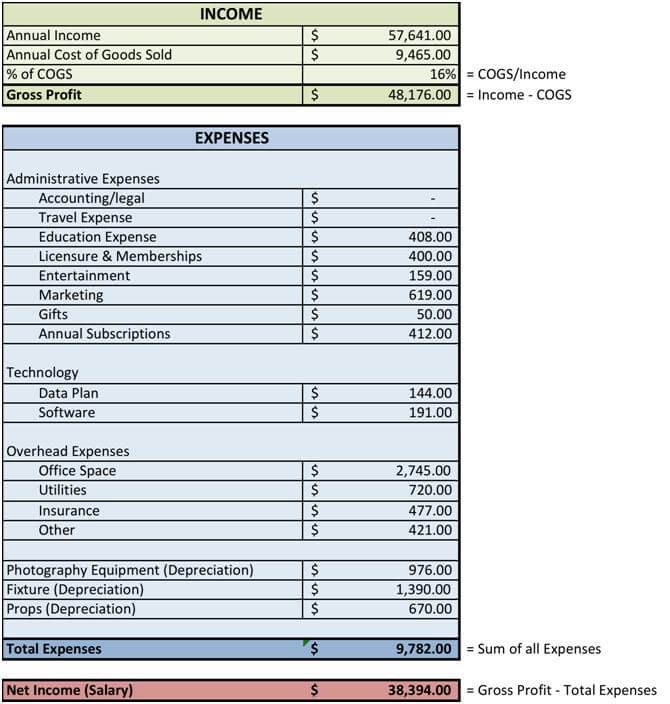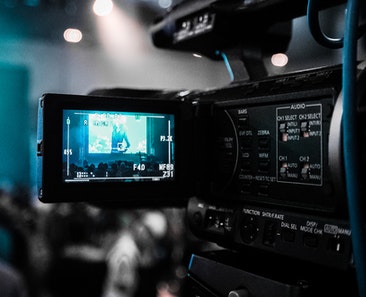How to Price Your Photography For Profit

Photography Pricing Guide: Pricing for Profit
Have you ever wondered how to set the right price for your photography services or whether your photography business is truly profitable? The key to answering these questions lies in understanding your costs. Many photographers mistakenly underestimate both the time they invest and the total expenses they incur—everything from gear upgrades and insurance to software subscriptions and marketing costs.
By taking a close look at all of your expenses, you’ll gain clarity on your true cost of doing business, which is essential for creating a pricing structure that’s both fair to your clients and profitable for you. After all, you deserve to be compensated for the value of your work and the expertise you bring to every shoot.

Photography Session Time
It is easy to lose track of the amount of time you invest in a portrait session. Let's look at an example of the time involved for a typical family portrait session. (Keeping in mind the time investment may be much more significant for a newborn session, wedding, or special event)
- 1-2 hours of travel to and from the session
- 30 minutes of preparation and setup for the shoot
- 1-2 hours of shooting time
- 1 hour to load images onto a computer, upload to a proofing website, then back up the files on an external hard drive once
- 1-3 hours of editing time, including cropping, color, retouching, sharpening, and saving a copy for print and a copy for the internet
- 1-4 hours for designing press products and revising proofs
- 2-3 hours to talk to the client, answer questions, receive order and payment, order their prints, receive and verify prints, package prints, schedule shipment, and ship (or hand deliver if local)
You can see how a two-hour portrait session quickly turns into more than ten hours of work from start to finish.

Photography Business - Operating Time
Keep in mind that your work as a professional photographer isn’t limited to client sessions alone. You also spend valuable operating time on tasks such as:
- Marketing your services
- Creating and sending invoices
- Maintaining business licenses
-
Updating your website and blog
- Handling sales taxes
- Engaging in professional development (see below)
In addition to these responsibilities, you might attend seminars or workshops led by industry experts. You may follow photographers you admire, participate in online forums, and read blogs (like this one) to further develop your photography and business skills. Staying current on the latest equipment, creative products, and industry trends is essential for remaining competitive.
When you factor in all these operating tasks, it’s common to spend an additional 5 to 20 hours each week on your business—time that needs to be reflected in your overall cost structure.
READY TO STREAMLINE YOUR PRICING?
Get our FREE PHOTOGRAPHY PRICING TEMPLATE to break down your costs, time, and revenue goals in one place.
With this template, you’ll be able to confidently determine how much you need to charge to cover every aspect of your work—while still leaving room for profit and growth.
Photography Expenses
When analyzing your photography business finances, it’s helpful to break them down into two main categories: Cost of Goods Sold (COGS) and Operating Expenses.
1. Cost of Goods Sold (COGS)
Also referred to as COGS, these are the direct costs associated with each individual photography session or project. Examples include:
- Product Costs – Prints, photo albums, canvas wraps, or other physical deliverables.
- Travel Expenses – Mileage, fuel, parking fees, and transportation costs directly linked to a session.
- Packaging – Boxes, envelopes, and other wrapping materials needed to deliver finished products.
- Shipping – Postage or courier fees for sending products to clients.
- Credit Card Fees – Transaction costs for payments processed through credit cards or online platforms.
- Client Gifts – Small tokens or thank-you items to show appreciation.
By tracking and accounting for these session-specific expenses, you’ll have a clearer picture of how much it really costs to deliver each photography service you offer.

2. Operating Expenses
Operating expenses—often referred to as overhead expenses—are the costs associated with running your photography business on a day-to-day basis. These costs typically exist regardless of how much income you generate. Most operating expenses remain relatively fixed, although some (such as utilities) may fluctuate based on the season or level of usage.
Examples of Fixed Operating Expenses:
- Professional Memberships – Fees for industry organizations or associations.
- Insurance – Coverage for your business, equipment, and liability.
- Editing Software – Ongoing subscription costs (e.g., Adobe Creative Cloud).
- Image Hosting – Online gallery or cloud storage fees.
- Website Maintenance – Domain registration, web hosting, and regular site updates.
- Studio Rent – Monthly lease or mortgage for dedicated studio space.
Examples of Variable Operating Expenses:
- Marketing Costs – Advertising, promotions, social media campaigns.
- Product Samples – Demo albums, canvas prints, or other example products.
- Design Work – Outsourced branding or marketing collateral.
- Utilities – Electricity, heating/cooling, and fixtures for your studio/home office.
- Technology Costs – Hardware (computers, cameras, phones), software, data plans.
- Professional Development – Fees for workshops, seminars, and online courses.
- Professional Services – Hiring accountants, virtual assistants, or business consultants.
- Travel – Conference attendance, networking events, or location scouting.
- Mentoring Sessions – One-on-one business coaching and skill development.
- Employee Salaries – If you hire staff, their wages and benefits also fall under operating expenses.
By carefully tracking both fixed and variable operating expenses, you’ll have a clearer view of your overall cost of doing business, enabling you to set prices that ensure sustainability and profitability.

Equipment Expenses
It’s also important to account for the investment required to acquire, maintain, and update your professional gear. This may include:
- Camera bodies
-
Lenses
- Lighting equipment
- Tripods
- Props and backdrops
- Memory cards
Tracking these costs not only ensures that you budget adequately for equipment upgrades but also helps you maintain a consistent level of quality and professionalism in your photography services.

How Profitable is Your Photography Business?
To determine whether your photography business is truly profitable, you need to look at both your income and your true expenses.
In the following example, we’ll explore a year-end Net Income statement for a family portrait photographer without employees. Net Income is calculated by subtracting the Cost of Goods Sold (COGS) and Operating Expenses from your total Annual Revenue.

Factoring In Your Time Investment
While Net Income is a great starting point, it doesn’t tell the whole story. You must also consider the time you invest—both in individual sessions and daily operations like marketing, client communication, and website maintenance.
In this example:
- Each session requires 10 hours of work (shooting, editing, delivering images).
- Weekly operating tasks total 12 hours (marketing, bookkeeping, administrative duties).
- The photographer completes 65 sessions per year.
By adding up all the hours spent on sessions and operations, you can calculate an effective hourly rate by dividing your Net Income by the total hours worked over the year.

Discovering Your Hourly Rate and Per-Sale Average
In our scenario, the photographer’s hourly rate comes out to around $30 per hour once Net Income is divided by the total hours worked. Likewise, by dividing annual income by the number of sessions (65), you’ll see the average revenue per sale is approximately $886.

All of this analysis leads to a key consideration: How do you know what to charge to ensure you’re making money? By understanding your Net Income, time investment, and average per-sale figures, you can more confidently set profitable pricing that reflects both the value of your services and the true cost of running your photography business.

How to Price Your Photography
1. Determine Your Costs and Desired Workload: Start by calculating all of your expenses—including equipment, travel, editing software, and overhead costs. Next, decide how many sessions you’d like to schedule each year and the hourly rate that reflects both your skill level and the value you deliver.
2. Consider Your Market and Markup: Factor in your product offering, competition, and target audience when deciding on your profit margin. Aim for a balance that remains appealing to your ideal clients while covering costs and generating a healthy profit.
3. Review and Adjust Regularly: Update your pricing structure as your business evolves, taking into account growth, inflation, and changes in the market. Remember, you’ll also need to plan for tax obligations on your earnings.
4. Stay Confident: Pricing can be challenging, but it’s crucial to value your work. Your rates should reflect the time, talent, and expertise you bring to every shoot.
5. Seek Professional Guidance: If you need help refining your profitability model, consider working with a professional accountant. Additionally, the Professional Photographers of America (PPA) provides members with valuable online tools in their “Benchmarking Resources.” PPA’s Square One program also helps determine sales averages and the number of sessions needed to meet your net income goals.
By following these steps and taking advantage of available resources, you’ll be well on your way to setting profitable and sustainable photography prices.
Conclusion
Setting profitable photography prices isn’t just about covering expenses—it’s about recognizing and valuing the expertise, creativity, and time you invest in every session. By tracking all of your costs, understanding your true time commitment, and regularly reassessing your pricing model, you’ll be able to:
- Confidently communicate your rates
- Maintain a sustainable and profitable business
- Continue growing your skills and investing in better equipment
Remember: Your work is worth it. By clearly identifying your costs, confidently setting your prices, and keeping an eye on your bottom line, you’ll position yourself for long-term success and satisfaction in your photography career.
FREE BONUS!
Get our FREE PHOTOGRAPHY PRICING TEMPLATE to break down your costs, time, and revenue goals in one place.
With this template, you’ll be able to confidently determine how much you need to charge to cover every aspect of your work—while still leaving room for profit and growth.
Do you have any questions or comments about Photography Pricing? Leave us a comment below - we would LOVE to hear from you! And PLEASE SHARE our tutorial using the social sharing buttons (we really appreciate it)!





